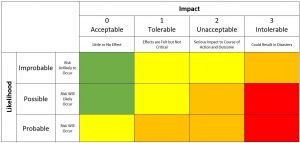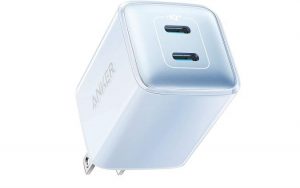By Emily Guy Birken
Greater work experience often means higher pay, which puts professionals in their 40s and 50s in an excellent position to ramp up their retirement savings. But this time of life also coincides with many additional financial needs, such as helping elderly parents or paying for kids’ higher education—or both.
Considering all of these competing priorities, figuring out how and when to prepare for retirement can feel pretty fraught. Here’s what you should do in your 40s and 50s to make sure you can have a secure retirement.
In Your 40s
Once you start seeing a sprinkling of salt among the pepper in your hair, it’s a little easier to imagine a day when you may stop working. But it may still feel much less urgent than Junior’s braces or Mom’s medical bills. Here are some of the most important tasks to complete in your 40s to protect your retirement:
Have “The Talk” With Your Parents
Whether your parents are already retired or are winding down their career, it’s important to have an open conversation with them about their financial plans. Do they have enough set aside for a comfortable retirement? If not, how do they plan to bridge the gap? Do they expect you to provide them financial support?
While it can be awkward to talk about money if your family has long considered the topic taboo, it’s very important for you to be in the loop on what your parents have saved, where it is, what plans they have for the future, and who they trust as their financial adviser. Having ongoing conversations about these topics will protect both their retirement and yours, since you’ll be in a better position to make financial decisions on their behalf in an emergency, and you will know how their plans may affect yours.
Set Up Incremental Increases
For 2023, you can contribute up to $22,500 to a 401(k) and $6,500 to an individual retirement account (IRA). But unless you are among the 14% of workplace retirement plan participants who max out those contributions, you could probably afford to send more money to your retirement savings. One of the easiest ways to do this is to schedule incremental increases to your contributions every few months.
For example, if you are currently contributing 10% of your salary, you could increase the contribution amount by 1%. You’re unlikely to feel the difference in your paycheck but the increase will help your nest egg grow. Set up another 1% increase for six months from now, and another 1% in a year. Continue the incremental increases until you are having enough paycheck deferrals to ensure you are maxing out your contributions.
Beware of Lifestyle Creep
For many people, earning more money in your 40s comes with increased spending. It’s natural that additional income will translate to nicer cars, fancier vacations, or a bigger house, but letting your spending get away from you is a good way to derail your retirement.
You don’t need to live like a college student in your 40s to ensure a healthy nest egg, but don’t let yourself forget your frugal habits just because your income has increased. As a wise philosopher once said, “It’s like the more money we come across, the more problems we see.”
In Your 50s
Retirement feels much more possible in the ten years between 50 and 60. This is when stuff gets real, and it can be a little scary. Here’s what you can do during this time to take control and feel confident about your retirement.
Make a Plan for Healthcare
Healthcare is often a neglected part of retirement planning. Each year, Fidelity calculates how much money the average retired 65-year-old couple will need to cover their healthcare expenses in retirement. In 2022, that number was an eye-watering $315,000.
Your 50s is a good time to start thinking through how you will afford healthcare in retirement. You may want to look into long-term care insurance to see if it would be a good fit. You may explore what Health Savings Account options are available to you that would allow you to set pretax money aside for future healthcare costs. You may also want to amp up your investments in a Roth IRA, since you can withdraw that money tax-free in retirement, which could come in handy if you have a large medical bill.
Now is also a good time to recommit to taking good care of your health. It will have immediate psychological and physical benefits, and could help make your retirement more comfortable and less expensive.
Make Catch-Up Contributions
The IRS allows anyone who is 50 or older to make additional contributions to tax-advantaged retirement accounts. For 2023, that means those plan participants can contribute an additional $7,500 to a 401(k) or other workplace retirement plan, for a total of up to $30,000 in contributions. In addition, IRAs have a $1,000 catch-up contribution, meaning those over 50 can contribute a total of $7,500 to their IRAs.
Meet With a Financial Adviser
Whether you are already working with an adviser or have yet to meet with one, now is an excellent time to make an appointment. A financial adviser can help you determine if you are on track to retire on time and with enough money. Your adviser can also help you figure out how to tweak your plan to make sure it fits your needs and goals.
It’s Never Too Late
While you may not have the benefit of a long time horizon in your 40s and 50s, your increased income means it’s much easier to find money to invest in your retirement. Being proactive during these decades will help you create the retirement you want.

Emily Guy Birken is a Milwaukee-based personal finance writer. Her books include The 5 Years Before You Retire, Choose Your Retirement, Making Social Security Work for You, and End Financial Stress Now.
(8)
Report Post




